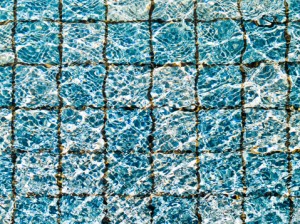Relationship Differences: Fusion and De/fusion (Part 11)
By Asher Crispe: January 9, 2013: Category Inspirations, Quilt of Translations
 The work of our understanding (binah) mostly entails performing invasive surgery on our experiences. When we analyze anything in order to conceptualize it we are breaking it apart which in turn is predicated upon being able distinguish ‘parts.’ Generally speaking I cannot examine the anatomy of an ‘ideational animal’ while it is still alive. Taking inventory of its components I must cut it up and thereby create a loss of wholeness which is how I become ‘partial’ to it (‘partial’ in the sense of having a bias but also in terms of only perceiving something incomplete). Our mental acuity at this level is comparable to having a faultless scalpel. In this context, we recognize ‘difference’ as something cleanly delineated. We decide in the mind by process of subtraction (literally ‘off’ [de] + ‘cut’ [caedere] or ‘cut off’). By contrast with the subtle sense of separation and difference in the world of Emanation which is a function of our intuitive ability, in the world of Creation soft distinctions will not suffice. We want a comprehensive understanding which means that the barely noticeable incision is not enough and we will have to use spanners to open up the wound wide enough for us to be able to reach in and grasp what’s inside.
The work of our understanding (binah) mostly entails performing invasive surgery on our experiences. When we analyze anything in order to conceptualize it we are breaking it apart which in turn is predicated upon being able distinguish ‘parts.’ Generally speaking I cannot examine the anatomy of an ‘ideational animal’ while it is still alive. Taking inventory of its components I must cut it up and thereby create a loss of wholeness which is how I become ‘partial’ to it (‘partial’ in the sense of having a bias but also in terms of only perceiving something incomplete). Our mental acuity at this level is comparable to having a faultless scalpel. In this context, we recognize ‘difference’ as something cleanly delineated. We decide in the mind by process of subtraction (literally ‘off’ [de] + ‘cut’ [caedere] or ‘cut off’). By contrast with the subtle sense of separation and difference in the world of Emanation which is a function of our intuitive ability, in the world of Creation soft distinctions will not suffice. We want a comprehensive understanding which means that the barely noticeable incision is not enough and we will have to use spanners to open up the wound wide enough for us to be able to reach in and grasp what’s inside.
While intuitive (chochmah) distinctions (what we called havdalah [הבדלה]) carry ‘difference in themselves,’ where all possible relationships are considered integral and thus unified within the element of separation (like the DNA of a particular cell containing the instructions for all the cells of the body), the term specific to the world of Creation is hafrada (‘separation/distinction’ or even ‘analysis’ [הפרדה]). Since the world of Creation opens up a state of dual-consciousness wherein the ‘other’ is externalized (from our perspective, Creation is outside of or seemingly independent from the Creator) we no longer experience ourselves in proximity to the other/Other (this was exclusive to the world of Emanation whose name Atzilut once again means etzel or proximity). This shift is marked by the degradation of the relationship from one of selfless dedication (being ‘to’ or ‘for’ the other [‘lo’] whom I can barely distinguish from myself as I move into the realm of the transpersonal) to one of mutual self interest (ezer or ‘helper’) where I’ll scratch your back if you scratch mine.
The sense of the relationship between two independent individuals with distinct interests and desires would be analogous to a relation of externality which is symbolized in Kabbalah as a back-to-back orientation. Thus, ‘back scratching’ figures as the relation that hovers at the level of surface externality relative to the relationship of face to face. The expression in Hebrew is literally panin b’panin or ‘face in face’ where my identity (face) is reflected in your identity (face). Even more profoundly, panim (face) is etymologically linked to the word penimiut (interiority) which means that ‘face in face’ (interface) could be considered as a state wherein my inner being is apparent within your inner being and vice versa.
The difference between these two types of separation could be expressed as one where, in the world of Emanation, I cannot be me (completely) without you/You, verses in the world of Creation, where we partner up and participate in each other’s lives. In the latter case, you/You are a part of me but not an integral part. You inhabit a peripheral orbit in my life but take up that position in an incidental way. We hooked up ‘accidentally’ and both benefited from this. Whereas, in the highest world with the dedication to the other/Other, I am for you and our relationship is essential, intrinsic and non-arbitrary. I relate to you/You and not the fringe benefits which are non-essential conditions of the relationship.
In his work on Hebrew synonyms, Beyur Shemot Hanirdafim, Rabbi Shlomo Aharon Wertheimer explains that the root of havdalah (Beit-Dalet-Lamed) connotes a minimal separation or soft distinction. The first and second appearances of this root in the Torah really drive home the nature of this kind of distinction. On day one in Genesis (1:5) we read of God “…separating (vayavdel) between the light and the darkness…” and on day two (1:6) He likewise “…separated (mavdil) between water and water…”. In both cases, the distinctions are extremely abstract and ephemeral, like a blade through the water which temporally separates and divides it while concurrently suturing the cut. This is why making havdalah (separation) is not a one time occurrence in Jewish practice. The reason is that these are not one time distinctions. We must continually reassert them. They are also separations which are not intended to remain separate but are divisions in order to ultimately reunite (for example: the darkness of night is reacquired within the light of day, the divided waters come back together again in the future, etc…).
According to Rabbi Wertheimer this is not so with the word hafrada (distinction, separation) which denotes a hard distinction with greater separation between the elements that have been split up. All ‘analysis’ aspires to this. We want to exact lasting distinctions which are clear-cut. Therefore, the more distance between one thing and the other, the easier it is to maintain the distinction. Hard distinctions, unlike soft ones, are not easily blurred. Our conceptual understanding (binah) is liable to generate one set of categories with which we can continue to indefinitely carve up our experience of the world. Once forged, these distinctions are simple to maintain. They don’t seem to need to be recreated anew each time we want to employ them. Intuition works differently. Each flash of intuition (chochmah) necessitates another ‘knife in the water.’ The etching of intuiting is done with quick drying invisible ink. Hence, we have to constantly revisit these subtle distinctions and go over them anew with each procurement of intuitional insight.
 By way of allusion, the root of havdalah (Beit-Dalet-Lamed) equals in gematria 36 which is our term ‘lo’ (Lamed-Vav) as in being ‘to or for him/Him’ in the world of Emanation. These are the 36 righteous ones (tzadikkim) which we mentioned previously whose selfless dedication to the other/Other manifests as the primary mode of relating in this highest world. Likewise, there is a hint to the use of hafrada (hard distinctions) in the world of Creation that works like this: in the Torah there are four levels of interpretation of the text which are collectively called PaRDeS (orchard). We sojourn in the ‘orchard’ of textual interpretation in order to harvest new meanings. The four levels correspond to the four worlds as follows: Emanation is the Sod or ‘esoteric’/secret meaning, Creation relates to the Drush or homiletical meaning, Formation corresponds to the Remez or hints or allusory meaning, and finally the Peshat signifies the plain or simple meaning. The secret or Sod dimension of the text is tied to the world of Emanation which is exclusively conscious of Divinity. Consequently, Kabbalah (which operates at this level) only has one subject–it interprets everything in the Torah in terms of Divinity or Divine revelation. This means, that even when the Torah is speaking of us, it is really just referring to another aspect of Divinity. To spin it the other way, we could also suggest that whenever the Torah seems to be speaking of Divinity, that it is really addressing another aspect of the soul. All these relationships are happening inside us and not just between us and God. In this way, we can say that the separation is virtual (soft distinction) in this world of unity and non-duality.
By way of allusion, the root of havdalah (Beit-Dalet-Lamed) equals in gematria 36 which is our term ‘lo’ (Lamed-Vav) as in being ‘to or for him/Him’ in the world of Emanation. These are the 36 righteous ones (tzadikkim) which we mentioned previously whose selfless dedication to the other/Other manifests as the primary mode of relating in this highest world. Likewise, there is a hint to the use of hafrada (hard distinctions) in the world of Creation that works like this: in the Torah there are four levels of interpretation of the text which are collectively called PaRDeS (orchard). We sojourn in the ‘orchard’ of textual interpretation in order to harvest new meanings. The four levels correspond to the four worlds as follows: Emanation is the Sod or ‘esoteric’/secret meaning, Creation relates to the Drush or homiletical meaning, Formation corresponds to the Remez or hints or allusory meaning, and finally the Peshat signifies the plain or simple meaning. The secret or Sod dimension of the text is tied to the world of Emanation which is exclusively conscious of Divinity. Consequently, Kabbalah (which operates at this level) only has one subject–it interprets everything in the Torah in terms of Divinity or Divine revelation. This means, that even when the Torah is speaking of us, it is really just referring to another aspect of Divinity. To spin it the other way, we could also suggest that whenever the Torah seems to be speaking of Divinity, that it is really addressing another aspect of the soul. All these relationships are happening inside us and not just between us and God. In this way, we can say that the separation is virtual (soft distinction) in this world of unity and non-duality.
Our interpretive matrix or PaRDeS is spelled Pei-Reish-Dalet-Samech [פרדס] in Hebrew. In the absence of the highest level (the Samech of Sod or Secret corresponding to the world of Emanation) then we are left with just Pei-Reish-Dalet which is the root of the word hafrada [הפרדה]. All three of these lower levels of interpretation enforce hard distinctions. We might call them ‘stubborn’ distinctions in that Pei-Reish-Dalet also spells the word pered which is a ‘mule.’ These are the coarser types of distinction (as stubborn and resistant to change as a ‘mule’). The ‘finer distinctions’ in life would be reserved for kabbalistic inquiry which utilizes a ‘liquid architecture’ or hair-splitting fiber-optic intuitive separations (havdalot).
In Part Twelve our set of distinctions will continue to be ironed out.
http://www.interinclusion.org/inspirations/relationship-differences-fusion-and-defusion-part-12/
http://www.interinclusion.org/inspirations/relationship-differences-fusion-and-defusion-part-10/























;)
;)
;)
;)
;)
;)
;)
;)
;)
;)
